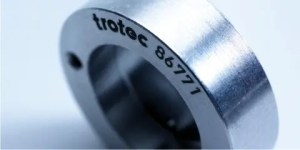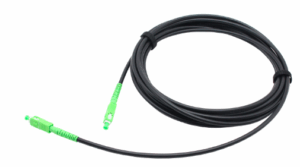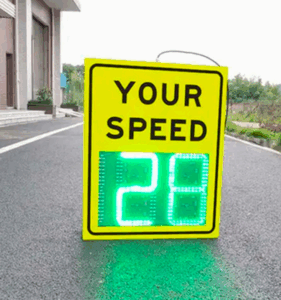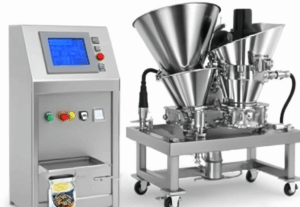Whether you are a new laser marking machine user or have rich experience in laser marking technology, you need to constantly improve the quality and contrast of laser marking. Laser marking machines for metals are especially important because metals are found almost everywhere in our daily lives, from electronics to complex medical devices.
Laser marking is a non-contact method for permanently marking metals, which can control or even automate the cutting depth. Laser marking is handy because it can be compatible with almost any vector software, such as CAD or Illustrator, for marking patterns. As with all processing technologies, there are important factors to consider when laser marking metals, and that’s what we’ll be discussing in this blog post. Without further ado, here are five things to consider when laser marking metals.

Table of Contents
ToggleMaterial Properties with laser marking machine
For all laser marking applications, it is important to consider the marking material. Materials have different absorption spectra, which means they react differently to different wavelengths. This must be kept in mind when deciding what materials and laser sources to use. The melting point and the material’s reaction to heat must also be considered. The hardness of the material should also be considered. For example, laser-marking aluminum will take less time than laser-marking steel because it is a softer metal with a lower melting temperature.
Type of the Laser marking machine
When laser marking metal, CW laser, and pulse laser can be used. Pulsed fiber lasers, however, are used at a higher frequency because they can deliver a higher-intensity beam without overheating the sample. Common Laser types used for Laser marking include “carbon dioxide, ytterbium-doped fiber, UV, and green and neodymium vanadate lasers” (from How to Laser).
CO2 lasers are used less for metals and more for wood, glass, and plastics. Similarly, green lasers are used less for metals and more for plastics and glass. Fiber lasers are commonly used to label metals, ranging from steel to copper. It is usually recommended to use a laser with a power greater than 50W to mark the metal. Fiber lasers can be designed to have higher beam quality than lasers with similar average output power. This beam quality controls the size of the beam spot, thereby controlling the width or fineness of the laser marking.
The Choice of Laser Marking Methods
There are a variety of laser labeling methods for metals that can produce different types of labeling. The durability and time considerations of each method are only part of the trade-off when deciding which method is best for a particular application. Some of them are explored below:
-Laser Engraving
This process sublimates the metal. The heat from the laser vaporizes the metal, turning it directly from a solid into a gas. Laser engraving produces very durable marks because they produce very deep marks in the context of the laser marking method. For laser engraving, the cutting depth tends to be between 0.0001 inch and 0.005 inch. Laser-engraved permanent markings are desirable in applications involving part traceability.
-Laser Etching
Laser etching is a very fast process that melts metal almost instantaneously. It creates high-contrast markers. Laser etching is not as permanent as laser engraving, and although they are similar, the etch is usually shallower than the engraved mark (less than 0.0001 inch). Because etchings produce shallower marks, they are also suitable for thinner metal sheets that require less mark persistence.
-Laser Annealing
This process creates color markers for specific metals, namely steel, titanium, and stainless steel. This method does not remove the material, but creates chemical changes under the surface of the material, making it ideal for surfaces that cannot withstand any damage. Through annealing, the metal is slowly heated by a laser beam, which changes the metal’s lattice structure. Metals oxidize and change color as they cool. For annealed metals, when incident light hits the metal surface, some of the light is reflected by the oxide layer and some is absorbed. The absorbed light is then absorbed or reflected by the oxide layer. The thicker the oxide layer, the darker the metal appears.
-Laser Ablation
Laser ablation is a method of selectively removing material from a solid surface in a controlled manner. This method can be used to remove paint or film, which is faster and more environmentally friendly than the methods typically used to remove films, but it can also be used to deposit films onto surfaces rather than just remove them.
Laser marking Machine Work Environment
As with any processing operation, it is vital to ensure that proper airflow and ventilation/filtration systems are used. The laser obviously produces heat, and the laser marking metal produces steam and particles. This makes it vital to have a safe working environment.
Cost
One of the decisions to be made is to determine whether it makes sense to buy laser marking or just have the other party perform the service and whether it is a better investment than the other party. This may depend on the number of products to be marked and/or the frequency with which laser marking devices are used. Material cost and time to complete each laser marking should also be considered.
Conclusion
when considering laser marking machines for metals, it’s important to take into account the material properties, type of laser, marking methods, work environment, and cost. Understanding the absorption spectra and heat reactions of different materials, choosing the appropriate laser type, and selecting the right marking method are crucial for achieving high-quality and durable marks. Additionally, ensuring a safe work environment and evaluating the cost-effectiveness of purchasing a laser marking machine are important factors to consider. By carefully considering these five factors, you can optimize the laser marking process for metals and achieve the desired results.
0




